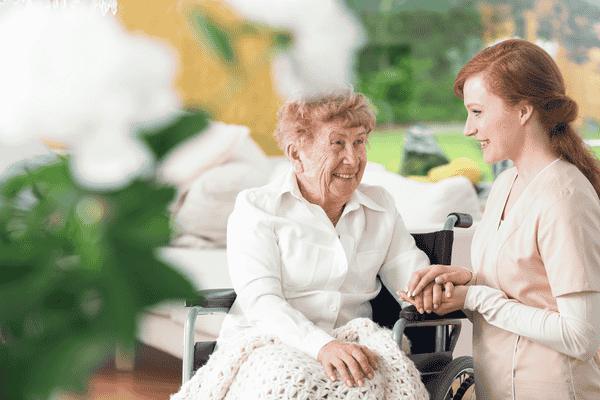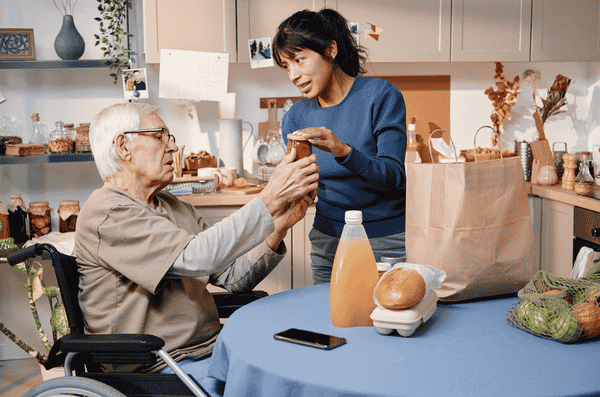In the tapestry of human experience, few threads are as vital and vibrant as the connections we forge with others. For seniors, these threads become even more precious, weaving a fabric of support, joy, and purpose that can profoundly impact their quality of life. As caregivers, family members, and community supporters, we hold the unique privilege and responsibility of nurturing these connections, ensuring that the golden years of our elders are rich with meaningful interactions and emotional fulfillment.
Imagine a world where every senior feels valued, heard, and deeply connected to their community. This isn’t just a heartwarming vision; it’s a goal that, when achieved, can transform the landscape of aging, turning what some fear as a time of decline into a period of growth, discovery, and continued contribution to society. In this exploration of social connections for seniors, we’ll delve into the profound impact these relationships can have, share inspiring stories of transformation, and provide practical strategies for fostering a more connected and vibrant life for the older adults in our care.
The Power of Social Connections: More Than Just Company
At first glance, social connections might seem like a simple concept – the interactions we have with others, the relationships we maintain. But for seniors, these connections are the lifeblood of a fulfilling life, offering benefits that extend far beyond mere companionship. They are the foundation of emotional well-being, cognitive health, and even physical vitality.
Consider the story of Mr. Thompson, a retired schoolteacher whose life had always been a vibrant tapestry of connections – with students, colleagues, and a loving family. Following the passing of his wife, his world seemed to shrink, the colors of his life fading as isolation crept in. It was his caregiver, Maria, who recognized the profound change in Mr. Thompson and decided to take action, understanding that rekindling his social connections could be the key to reigniting his zest for life.
Maria’s approach was gentle but persistent. She began by organizing weekly video calls with Mr. Thompson’s grandchildren, creating a bridge between generations that spanned the digital divide. At first, Mr. Thompson was hesitant, the technology feeling foreign in his hands. But as weeks passed, something remarkable began to happen. The sound of his grandchildren’s laughter became a beacon, drawing him out of his shell. Soon, he was sharing stories of his youth, his eyes twinkling with renewed vigor as he connected his past with the present generation.
This transformation wasn’t just about filling time or alleviating boredom. As Mr. Thompson’s social world expanded once again, Maria noticed significant changes in his overall well-being. His appetite improved, he started taking short walks in the garden, and most notably, the cloud of melancholy that had settled over him began to lift. This anecdote is not just a heartwarming tale; it’s a testament to the profound impact social connections can have on the lives of seniors.
The Science Behind Social Connections and Senior Well-being
The importance of social connections for seniors isn’t just anecdotal; it’s backed by a robust body of scientific research. Studies consistently show that older adults with strong social networks experience a myriad of benefits that touch every aspect of their lives.
Physical Health Benefits
Surprisingly, social connections can be as crucial to physical health as diet and exercise. Research has shown that socially active seniors tend to have:
- Lower blood pressure
- Reduced risk of cardiovascular problems
- Strengthened immune systems
- Better nutrition habits
Dr. Emily Chen, a geriatrician specializing in senior wellness, explains, “When seniors maintain active social lives, they’re more likely to stay physically active, adhere to medication regimens, and engage in health-promoting behaviors. It’s as if their social connections become a motivating force for taking better care of themselves.”
Cognitive Function and Mental Acuity
The benefits of social interaction extend to cognitive health as well. Engaging in regular social activities has been linked to:
- Improved memory and cognitive function
- Reduced risk of cognitive decline and dementia
- Enhanced problem-solving skills
- Increased mental stimulation
“Think of social interactions as a gym for the brain,” says Dr. Chen. “Every conversation, every shared activity, every new experience in a social context challenges the brain to stay active and adaptable.”
Emotional and Psychological Well-being
Perhaps the most immediate and noticeable impact of social connections is on emotional health. Seniors with strong social ties often experience:
- Lower rates of depression and anxiety
- Increased sense of purpose and self-worth
- Greater resilience in the face of life’s challenges
- Higher overall life satisfaction
These emotional benefits create a positive feedback loop. As seniors feel more connected and valued, they’re more likely to seek out and maintain social connections, further enhancing their well-being.
The Role of Caregivers: Architects of Connection
Caregivers stand at the forefront of this social revolution in senior care. Whether professional caregivers, family members, or community volunteers, those who dedicate their time to supporting seniors have a unique opportunity to foster and nurture social connections that can transform lives.
Maria’s approach with Mr. Thompson exemplifies the multifaceted role caregivers can play:
- Observer: Maria first noticed the change in Mr. Thompson’s demeanor, recognizing the signs of social isolation.
- Facilitator: She took the initiative to set up video calls, bridging the gap between Mr. Thompson and his family.
- Educator: Maria patiently taught Mr. Thompson how to use video calling technology, opening up new avenues for connection.
- Encourager: She celebrated Mr. Thompson’s progress, boosting his confidence and motivation to stay engaged.
- Innovator: As Mr. Thompson became more comfortable with technology, Maria explored new ways to expand his social circle, including online forums for retired educators.
This holistic approach to caregiving goes beyond meeting physical needs; it addresses the crucial social and emotional aspects of senior well-being. By understanding the profound impact of social connections, caregivers can become powerful catalysts for positive change in the lives of the seniors they support.
Strategies for Fostering Social Connections
While the importance of social connections is clear, the path to creating and maintaining these connections can sometimes be challenging, especially for seniors who may face physical limitations or have experienced significant life changes. Here are some strategies that caregivers and family members can employ to help seniors build and maintain a vibrant social life:
1. Leveraging Technology for Virtual Connections
In an increasingly digital world, technology offers unprecedented opportunities for seniors to stay connected, even when physical distance or mobility issues present challenges. The key is to make technology accessible and non-intimidating.
- Start Small: Begin with simple, user-friendly devices and applications. Video calling apps like FaceTime or Skype can be excellent starting points.
- Provide Patient Guidance: Offer step-by-step instructions and be prepared to repeat them as needed. Create simple, written guides that seniors can refer to when you’re not around.
- Explore Senior-Friendly Platforms: Look into social media platforms or online communities specifically designed for older adults. These can offer a sense of community and shared experiences.
- Encourage Regular Use: Help set up scheduled calls with family and friends to create a routine and give seniors something to look forward to.
Mr. Wong’s experience illustrates the transformative power of technology. Initially hesitant about using a tablet, he found joy in reconnecting with a childhood friend from another city through video calls. This virtual connection reignited a friendship that had been dormant for decades, proving that it’s never too late to rekindle old relationships.
2. Facilitating Community Engagement
Local community involvement can provide seniors with a sense of purpose and belonging. Caregivers can play a crucial role in identifying and facilitating these opportunities:
- Explore Local Senior Centers: Many communities have centers that offer activities, classes, and social events specifically for older adults.
- Investigate Volunteer Opportunities: Helping others can give seniors a sense of purpose. Look for volunteer positions that match their interests and abilities.
- Encourage Participation in Religious or Spiritual Communities: For many seniors, faith communities provide a strong source of social support and meaning.
- Look into Lifelong Learning Programs: Many colleges and universities offer courses for seniors, providing intellectual stimulation and social interaction.
Mrs. Patel’s story exemplifies the power of community engagement. When her caregiver suggested joining a local gardening club, Mrs. Patel was initially reluctant, feeling that her arthritis would hold her back. However, with gentle encouragement, she decided to give it a try. The result was transformative. Not only did Mrs. Patel find new friends who shared her passion for plants, but she also discovered adaptive gardening techniques that allowed her to continue her beloved hobby despite physical limitations. The garden club became a weekly highlight, giving her something to look forward to and a new sense of purpose.
3. Nurturing Family Connections
While community and virtual connections are important, family ties often form the core of a senior’s social network. Caregivers can help strengthen these bonds:
- Organize Regular Family Gatherings: Whether in person or virtual, scheduled family time can give seniors a sense of continuity and belonging.
- Facilitate Intergenerational Connections: Encourage interactions between seniors and younger family members. This can be as simple as having grandchildren share their school projects or teaching them family recipes.
- Create Memory Projects: Work with seniors to create family history books, photo albums, or even digital storytelling projects. This not only provides a meaningful activity but also strengthens family bonds through shared memories.
The story of Mrs. Davis illustrates the power of family connections. Her caregiver, Alex, noticed that Mrs. Davis often spoke wistfully of her large, once-close family that had drifted apart over the years. Taking initiative, Alex reached out to family members and organized a surprise reunion picnic in Mrs. Davis’s honor. The day of the picnic, Mrs. Davis’s face lit up with joy as she saw children, grandchildren, and even great-grandchildren gathered to celebrate her. This event not only provided immediate happiness but also rekindled family relationships, leading to more regular visits and calls. For Mrs. Davis, it was as if a part of her world that had faded away suddenly burst back into vibrant color.
4. Encouraging Hobbies and Interests
Shared interests can be a powerful foundation for social connections. Caregivers can help seniors explore or rediscover hobbies that can lead to social interactions:
- Identify Interests: Talk with seniors about their past hobbies or things they’ve always wanted to try.
- Find Groups or Classes: Look for local clubs, classes, or online communities centered around these interests.
- Adapt Hobbies for Current Abilities: If physical limitations are a concern, explore ways to modify activities to make them accessible.
- Create Sharing Opportunities: Encourage seniors to share their skills or knowledge, perhaps by teaching a craft to others or writing about their experiences.
Mr. Rivera’s experience with rediscovering his love for chess serves as a perfect example. Once an avid player, Mr. Rivera had given up the game after a stroke affected his vision. His caregiver, noticing Mr. Rivera’s wistful glances at his old chessboard, researched and found a local club that used specially designed boards for visually impaired players. With some encouragement, Mr. Rivera joined the club. Not only did he rediscover the joy of the game, but he also formed new friendships with fellow chess enthusiasts, giving him a renewed sense of intellectual stimulation and social connection.
Addressing Barriers to Social Connection
While the benefits of social connections are clear, it’s important to recognize and address the barriers that many seniors face in maintaining an active social life. Understanding these challenges is the first step in overcoming them:
Physical Limitations
Mobility issues, hearing loss, or vision impairment can make social interactions challenging. Caregivers can help by:
- Arranging transportation to social events
- Ensuring venues are accessible
- Providing assistive devices like hearing aids or magnifiers
- Advocating for accommodations in group settings
Fear and Anxiety
Some seniors may feel anxious about social situations, especially if they’ve been isolated for a while. Caregivers can:
- Start with small, low-pressure social activities
- Offer to accompany seniors to new events for support
- Encourage gradual increases in social engagement
- Provide reassurance and positive reinforcement
Technology Barriers
While technology can be a great tool for connection, it can also be intimidating. To help overcome this:
- Offer patient, repeated instruction on using devices and apps
- Look for senior-friendly devices with simplified interfaces
- Enroll seniors in basic technology classes designed for older adults
- Provide written instructions for reference
Loss and Grief
The loss of a spouse, friends, or family members can significantly impact a senior’s social network and willingness to engage. Caregivers can:
- Acknowledge the loss and allow time for grieving
- Gently encourage maintaining existing connections
- Help find support groups for those experiencing similar losses
- Gradually introduce new social opportunities when the senior feels ready
By recognizing and addressing these barriers, caregivers can help seniors overcome obstacles to social connection, opening the door to a more engaged and fulfilling social life.
The Ripple Effect: How Senior Social Connections Benefit Everyone
The impact of strong social connections for seniors extends far beyond the individual. When older adults are socially engaged and emotionally fulfilled, it creates a positive ripple effect that touches their families, communities, and society at large.
Strengthened Family Bonds
When seniors are socially active and engaged, it often leads to more meaningful interactions with family members. Grandchildren benefit from the wisdom and stories of their grandparents, while adult children find relief and joy in seeing their parents thrive.
Community Enrichment
Socially engaged seniors often become valuable contributors to their communities. Their volunteerism, participation in local events, and sharing of life experiences enrich the social fabric of the entire community.
Reduced Healthcare Burden
Seniors with strong social connections tend to have better overall health, potentially reducing the strain on healthcare systems and families. This can lead to lower healthcare costs and better allocation of medical resources.
Intergenerational Learning
Active, socially connected seniors can be incredible resources for younger generations, sharing historical perspectives, life skills, and cultural traditions that might otherwise be lost.
Changing Perceptions of Aging
As more seniors remain actively engaged in their communities, it helps shift societal perceptions of aging. Instead of viewing older adults as passive recipients of care, we begin to recognize them as valuable, contributing members of society.
Conclusion: A Call to Action for Compassionate Connection
As we conclude our exploration of social connections and senior well-being, it’s clear that the power to transform lives lies within our hands. Whether you’re a professional caregiver, a family member, or simply a caring member of your community, you have the ability to make a profound difference in the life of an older adult.
Remember Mr. Thompson, whose world expanded through the simple act of video calls with his grandchildren. Think of Mrs. Patel, who found new purpose and joy in a community gardening club. Recall Mr. Wong, reconnecting with old friends through technology, and Mrs. Davis, whose family bonds were rekindled through a thoughtful reunion.
These stories are not just heartwarming anecdotes; they are blueprints for action. They show us that with creativity, persistence, and compassion, we can help seniors build and maintain the social connections that are so vital to their well-being.
As we move forward, let’s commit to:
- Recognizing the profound impact of social connections on senior health and happiness
- Taking proactive steps to facilitate and encourage social engagement for the older adults in our lives
- Addressing barriers to social connection with empathy and innovative solutions
- Celebrating the contributions that socially engaged seniors make to our families and communities
In doing so, we not only enhance the lives of individual seniors but also create a society that values, respects, and benefits from the continued engagement of its older members. Let’s work together to weave a rich tapestry of connection, ensuring that the golden years truly shine for every senior in our care.





